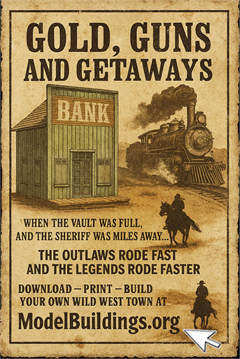Everything on model trains, model railroads, model railways, locomotives, model train layouts, scenery, wiring, DCC and more. Enjoy the world's best hobby... model railroading!
Track Codes
James is interested in HO scale and asks readers:
“The last train set I had was in 1996. Back then it was just buy the track and put your set together. Now, there are codes on everything! ARRRG!! Could someone walk me thru what they all mean?”
You can respond to James below.
5 Responses to Track Codes
Leave a Reply















Track codes refer to the size of the rail, the larger the code – the larger the rail, but still in scale. The railroads often use rails suitable to the usage of the track. For example, mainline track where long, heavy trains travel frequently might use code 100. Codes 70 or 83 will typically be used on branch or short lines since the traffic will likely be lighter (in both weight and amount). Smaller rails are usually kept to track that has little traffic, like spurs serving industries or team tracks. It’s often a financial issue since smaller rails require less steel and are cheaper. On your HO equipment, you need to make sure the flanges on the wheels don’t ride on the spike heads if you opt for code 50, 63, or 70 rails.
Hi James, Dale has given an interesting insight into track codes. Codes actually denote the height of the rail from the roadbed. Code 100 was the earliest and the locomotives and rolling stock have deeper flanges. Newer locomotives started to have shallower flanges and so track manufacturers started to makecode 83, code 70 and code 55 (all in HO scale). Code 100 has a rail height of 0.1 inch; Code 83 has a rail height of o.o83 inches; Code 70 has a rail height of 0.070 inches and Code has a rail height of 0.055 inches. The advantage of using Code 100 is that you can run older with deeper flanges and newer locomotive with shallower flanges without the wheels any problems. If you were to use a deeper flange wheel on a code 83 or 70 you run the risk of derailments because the wheels will be running on the sleepers and ties. As modellers, we may have an inventory mixed up of OO and HO (British, American etc). Sousing code 100 of any manufacturer is best.
Faizal Sri Lanka
Code 70 us the british finescale for OO abd eorks brilliant. Code 83 we know in Europe from Roco flextrack. Otherwise we don’t see mych code 83 here. Just for info. And code 70 is more vorrect in scsle as code 100.
Don’t fret – your old trainset probably had what we now call code 100. It is the heaviest and still used by most HO modellers. When getting more specialised, chaps might use codes 100 for mainlines, and 83 for branches and sidings.
It is not essential.
I would always recommend Code 100 to newbies. It’s tough, cheap and easy to lay.
To summarise: The track code is the vertical dimension of the rail in hundredths of an inch.
Older model rolling stock has wider wheel flanges, so it may derail on modern, smaller, more accurate track, particularly on turnouts.
If you are buying all new modern model trains (having finer wheel flanges), the smaller sizes will work fine.